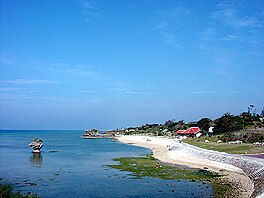
The Battle of Okinawa, codenamed Operation Iceberg, was a major battle of the Pacific War fought on the island of Okinawa by United States Army (USA) and United States Marine Corps (USMC) forces against the Imperial Japanese Army (IJA). The initial invasion of Okinawa on 1 April 1945 was the largest amphibious assault in the Pacific Theater of World War II. The Kerama Islands surrounding Okinawa were preemptively captured on 26 March, (L-6) by the 77th Infantry Division. The 82-day battle lasted from 1 April until 22 June 1945. After a long campaign of island hopping, the Allies were planning to use Kadena Air Base on the large island of Okinawa as a base for Operation Downfall, the planned invasion of the Japanese home islands, 340 mi (550 km) away.

Operation Downfall was the proposed Allied plan for the invasion of the Japanese home islands near the end of World War II. The planned operation was canceled when Japan surrendered following the atomic bombings of Hiroshima and Nagasaki, the Soviet declaration of war, and the invasion of Manchuria. The operation had two parts: Operation Olympic and Operation Coronet. Set to begin in November 1945, Operation Olympic was intended to capture the southern third of the southernmost main Japanese island, Kyūshū, with the recently captured island of Okinawa to be used as a staging area. In early 1946 would come Operation Coronet, the planned invasion of the Kantō Plain, near Tokyo, on the main Japanese island of Honshu. Airbases on Kyūshū captured in Operation Olympic would allow land-based air support for Operation Coronet. If Downfall had taken place, it would have been the largest amphibious operation in history.

The Borneo campaign of 1945 was the last major Allied campaign in the South West Pacific Area during World War II to liberate Japanese-held British Borneo and Dutch Borneo. Designated collectively as Operation Oboe, a series of amphibious assaults between 1 May and 21 July were conducted by the Australian I Corps, under Lieutenant-General Leslie Morshead, against Imperial Japanese forces who had been occupying the island since late 1941 – early 1942. The main Japanese formation on the island was the Thirty-Seventh Army under Lieutenant-General Masao Baba, while the naval garrison was commanded by Vice-Admiral Michiaki Kamada. The Australian ground forces were supported by US and other Allied air and naval forces, with the US providing the bulk of the shipping and logistic support necessary to conduct the operation. The campaign was initially planned to involve six stages, but eventually landings were undertaken at four locations: Tarakan, Labuan, North Borneo and Balikpapan. Guerilla operations were also carried out by Dayak tribesmen and small numbers of Allied personnel in the interior of the island. While major combat operations were concluded by mid-July, mopping-up operations continued throughout Borneo until the end of the war in August. Initially intended to secure vital airfields and port facilities to support future operations, preparatory bombardment resulted in heavy damage to the island's infrastructure, including its oil production facilities. As a result, the strategic benefits the Allies gained from the campaign were negligible.

USS Berrien (APA-62) was a Gilliam-class attack transport that served with the United States Navy from 1944 to 1946. She was scrapped in 1966.
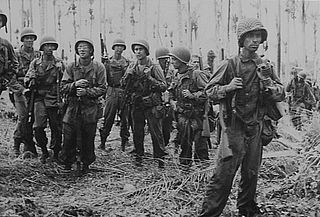
The New Britain campaign was a World War II campaign fought between Allied and Imperial Japanese forces. The campaign was initiated by the Allies in late 1943 as part of a major offensive which aimed to neutralise the important Japanese base at Rabaul, the capital of New Britain, and was conducted in two phases between December 1943 and the end of the war in August 1945.
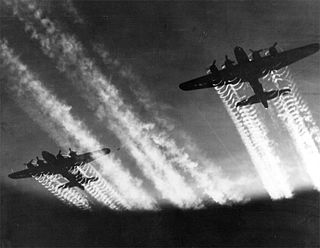
The military history of the United States in World War II covers the victorious Allied war against the Axis Powers, starting with the 7 December 1941 attack on Pearl Harbor. During the first two years of World War II, the United States had maintained formal neutrality as made official in the Quarantine Speech delivered by US President Franklin D. Roosevelt in 1937, while supplying Britain, the Soviet Union, and China with war materiel through the Lend-Lease Act which was signed into law on 11 March 1941, as well as deploying the US military to replace the British forces stationed in Iceland. Following the "Greer incident" Roosevelt publicly confirmed the "shoot on sight" order on 11 September 1941, effectively declaring naval war on Germany and Italy in the Battle of the Atlantic. In the Pacific Theater, there was unofficial early US combat activity such as the Flying Tigers.
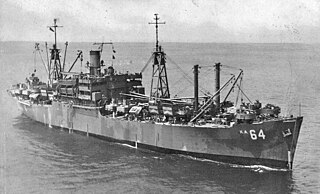
USS Torrance (AKA-76) was a Tolland-class attack cargo ship of the United States Navy named after Torrance County, New Mexico. She was designed to carry military cargo and landing craft, and to use the latter to land weapons, supplies, and Marines on enemy shores during amphibious operations. She served as a commissioned ship for 19 months.

USS Arenac (APA-128) was a Haskell-class attack transport in service with the United States Navy from 1945 to 1946. She was scrapped in 1974.

USS Highlands (APA-119) was a Haskell-class attack transport built and used by the US Navy in World War II. She was a Victory ship design, VC2-S-AP5. She was named after Highlands County, Florida, United States.
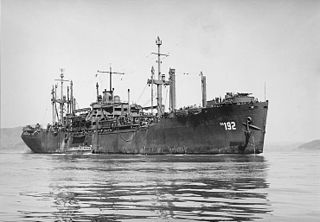
USS Rutland (APA-192) was a Haskell-class attack transport built and used by the US Navy in World War II. She was a Victory ship design, VC2-S-AP5. She was named after Rutland County, Vermont, USA.

USS Hansford (APA-106) was a Bayfield-class attack transport that served with the US Navy during World War II.

USS Sarasota (APA/LPA-204) was a Haskell-class attack transport that saw service with the US Navy in World War II, Korean War Era and after. She was of the VC2-S-AP5 Victory ship design type. Sarasota was named for Sarasota County, Florida.

The Battle of Morotai, part of the Pacific War, began on 15 September 1944, and continued until the end of the war in August 1945. The fighting started when United States and Australian forces landed on the southwest corner of Morotai, a small island in the Netherlands East Indies (NEI), which the Allies needed as a base to support the liberation of the Philippines later that year. The invading forces greatly outnumbered the island's Japanese defenders and secured their objectives in two weeks. Japanese reinforcements landed on the island between September and November, but lacked the supplies needed to effectively attack the Allied defensive perimeter. Intermittent fighting continued until the end of the war, with the Japanese troops suffering heavy loss of life from disease and starvation.

USS Charles Carroll (APA-28) was a Crescent City-class attack transport that served with the US Navy during World War II.
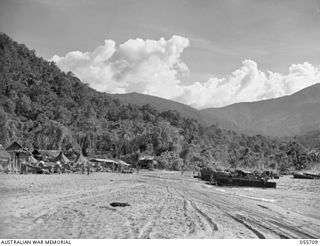
The Landing at Nassau Bay was an amphibious landing by Allied forces at Nassau Bay during the New Guinea campaign of World War II that took place between 30 June and 6 July 1943. The operation was undertaken so that Allies could secure a beachhead to establish a supply point to shorten their supply lines for the proposed attack on Salamaua as part of the Salamaua–Lae campaign and resulted in a battalion-sized force of US infantry and supporting elements being landed largely unopposed on the south-eastern flank of the battle zone.
The Scout and Sniper Company of 6th Marine Division was the division reconnaissance asset for the regimental commanders. It was created by former Marine Raider Major Anthony "Cold Steel" Walker to form a scout company from Company H from out of one of the regiments of 6th Marine Division. The Scout Company deactivated, along with 6th Marine Division, after the end of World War II.

USS Knudson (APD-101), ex-DE-591, later LPR-101, was a United States Navy high-speed transport in commission from 1944 to 1946 and from 1953 to 1958.

USS Pavlic (APD-70) was built by Dravo Corporation at Pittsburgh, Pennsylvania as a Buckley-class destroyer escort. Pavlic was launched 18 December 1943 and towed to Texas for refitting as a United States Navy high-speed transport. Pavlic was in commission from 1944 to 1946, serving in the Okinawa campaign as a radar picket ship. Pavlic was decommissioned 15 November 1946. After more than 20 years of inactivity in reserve, she was stricken from the Navy List on 1 April 1967. On 1 July 1968, she was sold for scrapping to North American Smelting Company.

The USS PC-598 was a 173 ft metal hulled PC-461-class submarine chaser that saw duty in the United States Navy in the Pacific Theater during World War II. It was converted to an amphibious landing control vessel during the war and reclassified a Patrol Craft – Control or PCC. It participated in six amphibious invasions as a control vessel.

The Raid on Yontan was an Empire of Japan military operation carried out on the night of May 24-25, 1945 against Yontan Airfield on Okinawa. The airfield had been recently seized by American forces during the first day of the Battle of Okinawa and was being used by United States Marine Corps and Army Air Force squadrons. Five Imperial Japanese Army Mitsubishi Ki-21 bombers, carrying Giretsu Kuteitai special airborne attack troops, conducted a suicide raid against Kadena and Yontan airfields on Okinawa. Four were shot down, but the fifth belly landed on the principal runway at Yontan allowing 10-12 giretsu troops to disembark on the airfield. The raid resulted in the destruction or damaging of 38 American aircraft and 70,000 gallons of fuel however its overall value was minimal because Yontan Airfield was reopened at 0800 the following morning with little effect to overall allied aviation operations.
